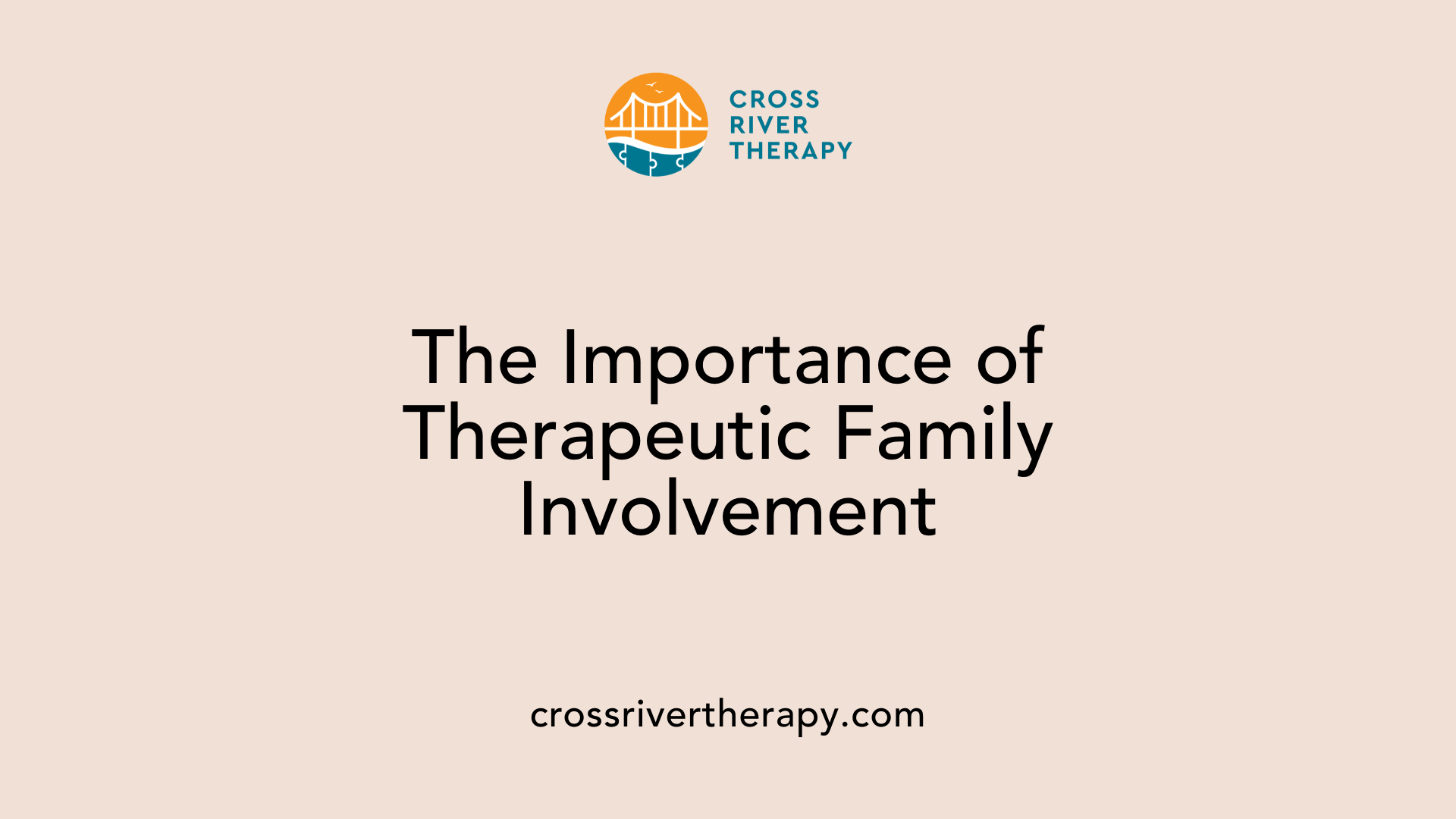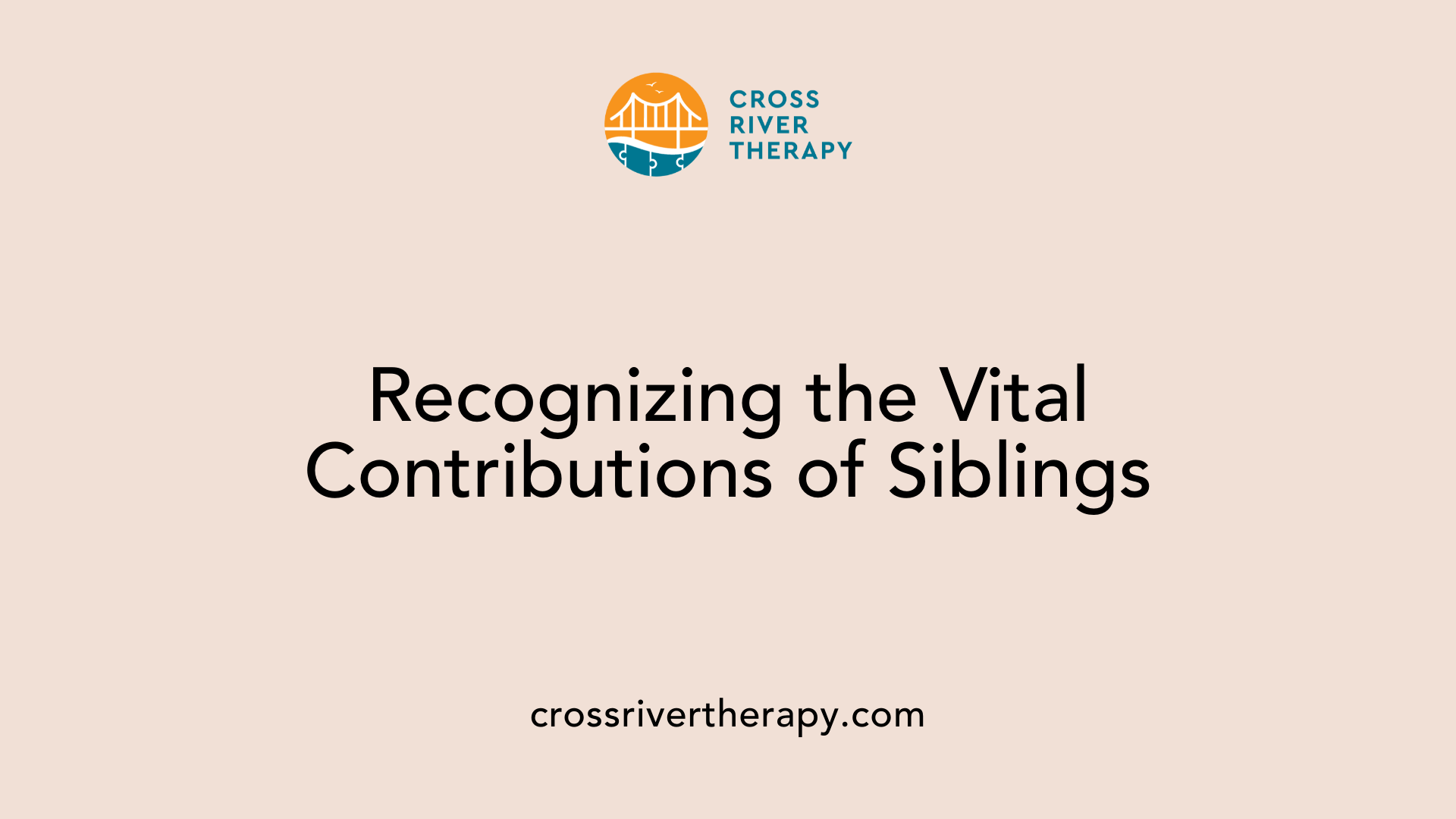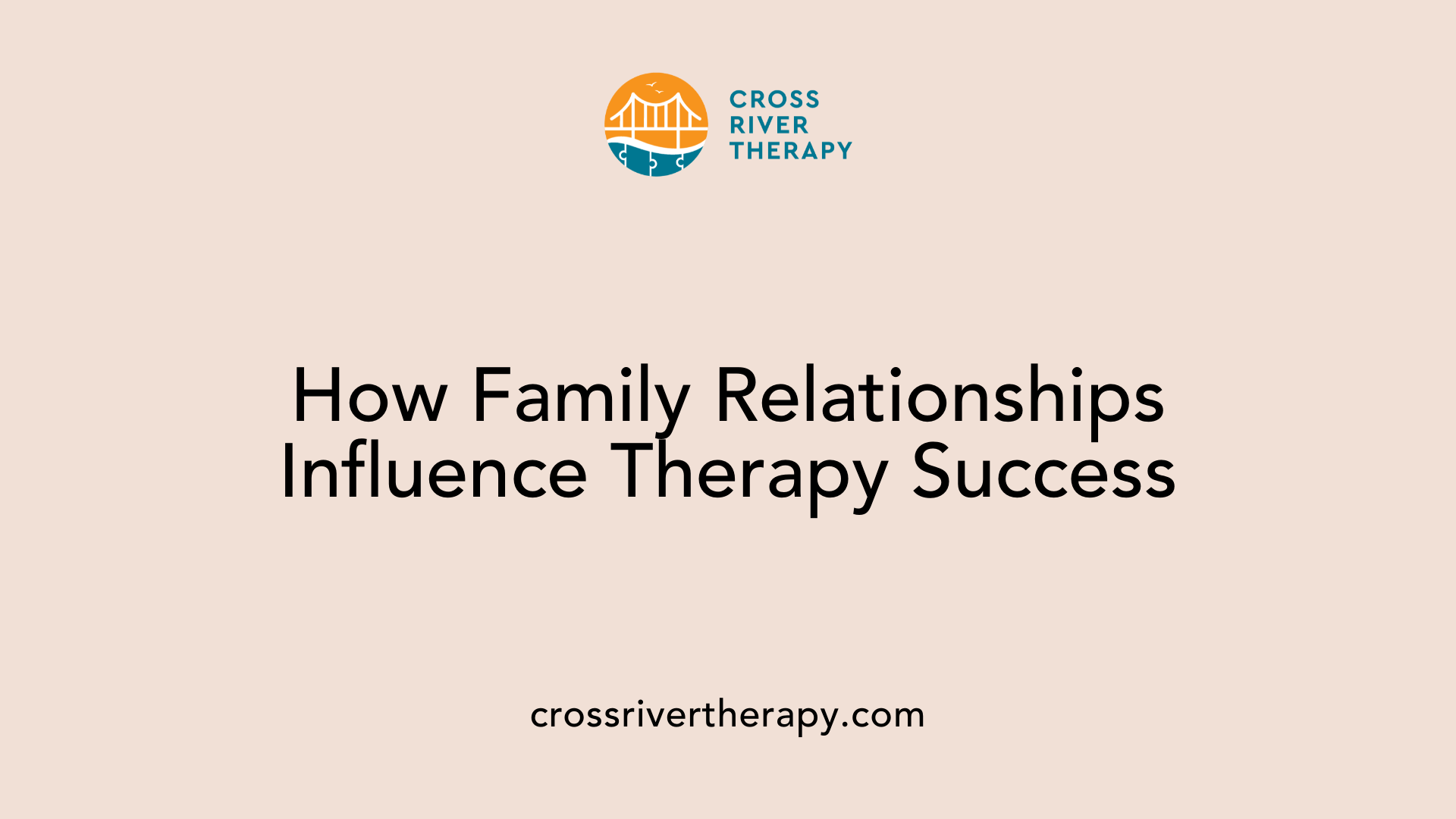How to Involve Siblings in ABA Therapy for Better Family Dynamics
Siblings as Key Participants in ABA Therapy for Autism
Introducing Siblings to ABA Therapy
Involving siblings in the ABA therapy process can significantly improve family dynamics, foster empathy, and create a more cohesive family environment. When siblings are integrated into therapy, they not only enhance the therapeutic experience but also learn more about the unique challenges their sibling faces, promoting a supportive and understanding home life.
Why Include Siblings in ABA Therapy?

Importance of Family Involvement in ABA
Family involvement plays a crucial role in the success of Applied Behavior Analysis (ABA) therapy. By creating a supportive environment, families help children with autism spectrum disorder (ASD) flourish. When families engage in therapy together, they facilitate skill reinforcement that can be generalized to various settings.
Role of Siblings in Improving Family Dynamics
Siblings can contribute significantly to improving family dynamics. Their involvement in ABA therapy promotes understanding and empathy, which enhances emotional support within the family. Including siblings in therapy sessions helps them grasp their sibling's experiences better, which fosters stronger relationships.
How can siblings be involved in ABA therapy to improve family dynamics?
Involving siblings in ABA therapy can significantly improve family dynamics by fostering understanding, cooperation, and emotional support. Families should include siblings in therapy sessions and address them as key participants in the child's growth process, ensuring they have a clear understanding of the therapy and how they can assist. Educating siblings about autism and the goals of ABA therapy helps demystify behaviors and encourages empathy. Additionally, parents can facilitate open discussions about feelings and expectations, celebrate achievements, and maintain a routine that includes all family members, ensuring everyone feels valued. This collaborative approach not only strengthens sibling relationships but also contributes to a nurturing and supportive family environment.
| Aspect of Sibling Involvement | Benefits | Recommendations |
|---|---|---|
| Understanding ABA Techniques | Improved empathy and support for the child | Actively include siblings in sessions |
| Communication about Emotions | Alleviates feelings of confusion or neglect | Encourage open discussions within the family |
| Creating Learning Opportunities | Develops social skills through interaction | Incorporate daily routines that engage all family members |
| Strengthening Family Bonds | Fosters cooperation and shared goals | Celebrate progress and achievements together |
The Critical Role of Siblings

What is the role of siblings in the ABA therapy process for children with autism?
Siblings are vital participants in the ABA therapy process for children with autism. Their involvement extends beyond mere presence; they engage in shared activities and learn therapeutic techniques alongside their siblings. This participation can significantly enhance their relationship, fostering healthier family dynamics.
When siblings are educated about the goals and methods of ABA therapy, they gain tools to navigate their sibling's challenges better. Such understanding not only supports the child undergoing treatment but also promotes empathy and compassion among family members.
Impact on therapy outcomes
The positive engagement of siblings can have a meaningful impact on therapy outcomes. Research shows that when siblings take part in the therapy process, they contribute to the generalization of skills learned during ABA sessions, thereby facilitating better social skills and communication.
Moreover, involving siblings in discussions about treatment goals encourages open communication and support within the family. It helps tailor therapy plans to meet the unique needs of the family, ensuring that each member feels validated and included. This collaboration can also ease emotional stress among siblings, as open dialogues about feelings related to autism lead to improved mental health and self-esteem.
Creating a supportive environment where siblings are actively involved has the power to enhance not just the therapy outcomes but also the overall quality of family life.
Enhancing Family Relationships through Sibling Involvement
What are the benefits of including siblings in ABA therapy for enhancing family relationships?
Including siblings in ABA therapy can significantly enhance family relationships by fostering understanding, empathy, and effective communication among family members. By actively participating in therapy sessions, siblings play a vital role in supporting their autistic brother or sister, which can lead to improved social skills and emotional well-being.
The involvement of siblings helps in developing essential social cues and providing emotional support during challenging moments. Regular interaction through structured activities benefits both the autistic child and their siblings, creating a nurturing environment.
Siblings who learn basic ABA techniques become more knowledgeable and feel included and valued in their sibling's journey. This engagement not only strengthens sibling bonds but also encourages cooperation and a shared commitment to the therapeutic process.
Education about autism is also crucial. When neurotypical siblings understand their sibling's behaviors and communication styles, they experience less confusion, which fosters acceptance and reduces feelings of isolation.
Furthermore, involving siblings can help alleviate feelings of neglect or confusion that they may face due to family dynamics affected by autism. This sense of inclusion promotes deeper connections among family members and cultivates a more cohesive family environment. Overall, sibling participation is a powerful contributor to positive family dynamics and successful ABA therapy outcomes.
Discussing Autism with Siblings
What are effective methods for discussing autism with siblings and fostering supportive interactions?
When discussing autism with siblings, age-appropriate language is crucial. For younger siblings, simple and clear explanations about autism help mitigate confusion and fears they may have. Parents should encourage open conversations, creating a supportive environment where siblings feel safe to express their emotions—be it fear, anger, or frustration.
Strategies to Enhance Understanding
- Use Visual Aids: Picture books or videos that explain autism can be helpful in breaking down complex ideas for younger children.
- Promote Shared Activities: Engaging siblings in activities with their autistic sibling can improve understanding and empathy. This could be as simple as playing a game or working on a craft together.
- Individual Time: Providing one-on-one time for neurotypical siblings without the presence of their autistic sibling is vital. This can help them feel valued and heard.
- Support Groups: Connecting siblings with support groups can offer them a platform to share their own challenges and feelings, fostering a sense of community.
Navigating Emotions and Misconceptions
Parents should also focus on addressing various emotions siblings may experience. This includes acknowledging feelings like anxiety or worry without invalidating them. Parents should provide accurate information about autism to combat any misconceptions siblings might have, helping them understand their sibling's behaviors. In doing so, they promote positive family dynamics and strengthen sibling relationships, which can lead to better coping mechanisms for all involved.
Creating a Supportive ABA Environment
How can families create a supportive ABA therapy environment for both the child with autism and their siblings?
Families play a crucial role in creating a supportive environment for ABA therapy, which greatly enhances the effectiveness of treatment for children with autism. One essential method is establishing structured routines. These routines help reduce anxiety and improve engagement, enabling the child to focus more effectively on their learning and therapy sessions.
In addition to routines, family members should designate calm spaces for specific activities. This strategy minimizes distractions and allows children with autism to concentrate better. Utilizing positive reinforcement tactics to acknowledge progress is another effective technique. This recognition can significantly motivate children, fostering a sense of achievement.
To support the child’s understanding, families can incorporate visual supports and straightforward communication methods. This approach not only aids in comprehension but also strengthens sibling relationships by promoting joint participation in learning activities. When siblings are engaged in the process, they cultivate empathy and cooperation, enriching their bond.
Moreover, parents can implement naturalistic teaching strategies that make lessons part of daily life, thus keeping activities engaging for all family members. Overall, promoting open communication and collaboration within the family encourages a harmonious atmosphere that benefits both the child with autism and their siblings.
Unique Challenges for Neurotypical Siblings
What unique experiences might neurotypical siblings have in families affected by autism?
Neurotypical siblings of children with autism spectrum disorder (ASD) often navigate a landscape filled with both emotional highs and lows. The unique dynamics in these families can foster deep empathy but can also introduce feelings of frustration and neglect.
Many neurotypical siblings find themselves in a caregiving role from a young age, which encourages maturity and responsibility but can also burden them with anxiety and stress. They may feel overwhelmed by the demands placed on them, often thinking about the needs of their autistic sibling above their own. This situation may lead to feelings of confusion, with siblings experiencing moments of feeling sidelined or less valued within family priorities.
Balancing family attention
To mitigate these feelings, it is crucial for parents to carve out individual time for their neurotypical children without their autistic siblings present. This dedicated attention helps these siblings feel seen and heard. Open communication is essential. Engaging in regular conversations allows siblings to express their feelings and reduces isolation.
Moreover, siblings who are involved in their family's therapy journey often gain a deeper understanding of autism, which can foster stronger, more compassionate relationships as they learn to support one another. While they face unique challenges, these experiences can lead to personal growth, shaping their self-concept and aspirations positively as they navigate their role within the family.
Additionally, families can enhance their cohesion by integrating sibling involvement in therapy sessions. In this way, neurotypical siblings can participate in their sibling's progress while celebrating achievements together, fostering deeper emotional bonds among family members.
Impact of Family Dynamics on ABA Therapy

How do family dynamics affect the efficacy of ABA therapy?
Family dynamics profoundly affect the efficacy of ABA therapy for children with autism. A positive family environment fosters better therapeutic outcomes by promoting consistency and support for the strategies learned in therapy sessions. This support is crucial for the success of ABA, as caregivers who are involved are more likely to reinforce techniques effectively at home, leading to meaningful skill generalization.
Involvement of caregivers can include family training, which empowers them to apply ABA methods confidently. This is particularly impactful for parents, as they report higher comfort levels when navigating services after receiving training. Notably, effective family communication can significantly reduce stress within the home. It provides a platform for expressing concerns and feelings, particularly for siblings who may feel isolated or burdened by the challenges presented by autism.
Furthermore, families who actively participate in their child's therapy discussions tend to create individualized ABA plans tailored to their unique needs. This customization leads to improved outcomes not just for the child with autism but also positively influences the sibling dynamics, fostering understanding and empathy among family members. By celebrating progress collectively, families enhance their relational bonds and create an environment where learning and growth flourish.
Individuals involved in ABA therapy can experience elevated levels of success when family members, including siblings, are engaged collaboratively throughout the process. This holistic approach emphasizes that the therapy extends beyond the individual, benefiting the entire family structure.
Addressing the Needs of All Family Members
Balancing attention among siblings
In families with children on the autism spectrum, balancing attention among siblings is crucial. Parents often face guilt regarding the time and resources devoted to their child with autism, which can inadvertently lead to feelings of neglect in their other children. To mitigate these feelings, it is essential for parents to actively involve all siblings in the therapeutic process.
This could include scheduling one-on-one time with the siblings, allowing them to express their thoughts and feelings about their experiences. Open communication creates a supportive environment, alleviating confusion or resentment and ensuring that every child feels valued and understood.
Parental guilt management
Parents can reduce guilt by actively incorporating siblings in therapy sessions. When siblings learn about autism and how to interact with their sibling, it fosters understanding and compassion. Additionally, providing siblings with individual attention and creating opportunities for them to explore their interests separately helps them feel prioritized. This balanced approach not only enhances relationships between siblings but also promotes emotional well-being for everyone in the family.
By encouraging siblings’ active involvement in ABA therapy and acknowledging their feelings, families can create a supportive environment that enhances the therapeutic process and strengthens familial bonds.
Therapist's Role in Facilitating Sibling Involvement
Collaborative family plans
A therapist's role in ABA therapy extends beyond direct work with the child with autism; it includes crafting collaborative family plans that incorporate siblings. By designing individualized ABA strategies tailored to the unique needs of both the child with ASD and their neurotypical siblings, therapists can promote inclusivity within the therapy process. This collaboration can strengthen family dynamics and improve outcomes for everyone involved.
Therapists often encourage families to express their specific needs, creating a plan that nurtures each member's participation. For instance, integrating therapeutic techniques into daily routines helps all family members engage, ensuring siblings feel valued and included in their sibling's progress.
Therapist guidance for families
Therapists play a crucial role in guiding families on how to involve siblings effectively. They may suggest strategies to foster open communication, where siblings can express their feelings about living with a brother or sister with autism. This can alleviate feelings of confusion and isolation.
Additionally, therapists often facilitate discussions aimed at educating siblings about autism. They can provide resources that help siblings develop better understanding, empathy, and coping strategies, ultimately enhancing the sibling relationship. By equipping families with useful techniques and encouraging joint participation, therapists help strengthen familial bonds, promoting better communication and emotional support among all members.
Involving siblings in therapy sessions creates opportunities for shared learning experiences and fosters strong interpersonal relationships that can withstand the challenges posed by autism.
Encouraging Open Communication and Expression

Facilitating Family Meetings
Establishing regular family meetings can serve as a crucial platform for encouraging open dialogue. These meetings allow family members to discuss their feelings, experiences, and any challenges they face in relation to their sibling with autism. Encouraging siblings to share their thoughts helps them articulate feelings of confusion or frustration, fostering a sense of understanding and support within the family dynamic. Parents can also use these meetings to provide updates on the child's ABA therapy progress, reinforcing the family's collective involvement in the therapeutic process.
Sibling Support Groups
Sibling support groups can provide an essential space for brothers and sisters of children with autism to connect and share their experiences. These groups can alleviate feelings of isolation and confusion, offering siblings a chance to express their emotions and learn coping strategies from peers. Through shared experiences in these supportive environments, siblings often develop stronger bonds and better understand the nuances of their sibling's challenges. Ultimately, this shared support enhances family cohesion, creating a more nurturing atmosphere for all family members involved.
Overcoming Challenges in Sibling Involvement
Possible hurdles and solutions
Involving siblings in ABA therapy can present various challenges. For instance, siblings might feel confused, neglected, or even resentful due to the extra attention given to their autistic sibling. To address these feelings, parents should engage in open discussions that validate their emotions. Providing individual time for each child can also help them feel valued.
Moreover, siblings of children with autism often face unique challenges such as embarrassment or feelings of isolation, particularly as they grow older. This necessitates tailored support strategies—parents can create a safe space for siblings to share their feelings, alleviating anxiety and promoting understanding.
Encouraging sibling participation
To foster sibling involvement in therapy, it’s essential to actively include them in the process and educate them about autism. Parents and therapists can provide opportunities for siblings to ask questions and express any misunderstandings they may have. Activities that enhance family bonds, such as involving siblings in home-based ABA sessions, encourage shared experiences that benefit everyone.
Research underscores the importance of sibling involvement for fostering compassion and understanding, ultimately leading to improved family dynamics and better therapeutic outcomes. Organizations should also share strategies for siblings to cope with stress, thereby enhancing their emotional well-being as part of the therapeutic journey.
Long-term Benefits for Siblings in ABA Therapy

Empathy and Maturity Development
Involvement in ABA therapy offers significant developmental benefits for siblings of children with autism. As they engage in therapy sessions, siblings cultivate empathy and compassion, learning to navigate diverse social situations. This exposure fosters emotional regulation skills, helping them understand and address their sibling's behaviors more effectively.
These experiences can lead to siblings demonstrating increased maturity. They learn to cope with the responsibilities that sometimes accompany having a sibling with autism, such as being supportive while managing their own feelings. This promotes resilience and adaptability in various life situations.
Future Family Dynamics
The long-term impact of siblings participating in ABA therapy extends to the overall dynamics within the family. Through open communication and shared experiences in therapy, siblings develop stronger relationships with their autistic siblings. This foundation of compassion encourages healthier interactions, reducing feelings of resentment or neglect.
Moreover, as siblings grow older, they often carry with them the understanding and skills gained during therapy. This enriched perspective fosters lifelong bonds and enhances the family's ability to navigate challenges together, creating a harmonious home environment.
Engaging siblings from the start in ABA therapy not only supports the individual with autism but strengthens the entire family's unity, paving the way for more effective communication and shared affection in the years to come.
Embracing the Role of Siblings in Autism Therapy
The inclusion of siblings in ABA therapy not only enhances the therapy's effectiveness but also strengthens the entire family's dynamics. Embracing the role of siblings can cultivate a supportive and loving environment where every family member thrives. By involving siblings in the therapeutic process, families reap the benefits of improved relationships, communication, and empathy, ultimately creating a resilient and understanding family unit.
References
- Family Dynamics in ABA Therapy
- Sibling Support: Navigating Neurodiversity with ABA Care
- Nurturing Sibling Bonds Among Children with Autism and Siblings
- Enhance Family Life with ABA Therapy Services
- Family Dynamics and Autism: Navigating the Complexity
- Considerations for Sibling Involvement in Your Child's ABA Program
- Considerations for Sibling Involvement in Your Child's ABA Program
- Empowering Siblings in the ABA Therapy Journey - Brightside ABA
- 13 Ways To Support Siblings of Children With Autism



